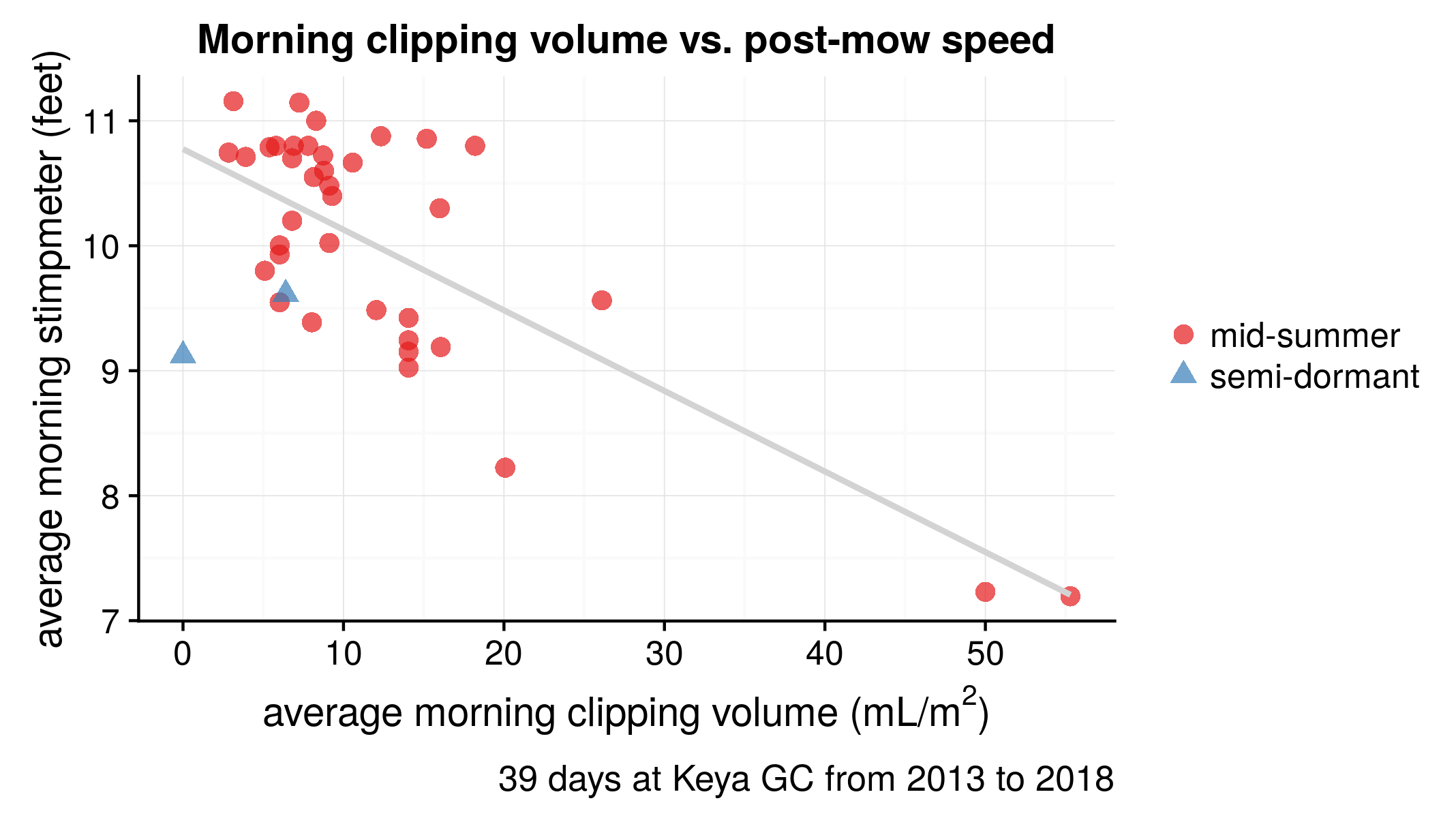Chapter 14 Green speed again
The question of clipping amounts and their relation to green speed comes up frequently.
In general, the relationship between morning clipping volume and the green speed measured shortly after goes like this. When there are fewer clippings, the green speed is faster.
Of course, one can find plenty of exceptions. Three notable ones are here.
- When one does a double cut, there will be more clippings, and the green speed will also be faster
It might be useful to restrict direct comparisons to days on which the same work is done to the turf. But one can also express the clipping volume as per mow per day, rather than per day. Here’s a quick description of this, with a background story. I’ve been most interested in clipping volume as a way to measure how much the grass is growing and how many nutrients the grass is using. Because of that, I want to know the total quantity of clippings removed, and I have reported the data in that way. I know a lot of people like to look at the relationship between clipping volume and green speed too. If one expresses the clipping volume as volume/area/mow, rather than volume/area/day, this relationship between clipping volume and green speed may be a little more obvious, especially in the case of double cuts. In that way, with a double cut, the volume is reduced by 50%, and of course one expects the speed with a double cut to go up.
- When the turf is not mown every day,
the speed will usually be faster on the day when it is mown and the clipping volume is > 0. Again, I find it useful to group the comparisons based on the work that was done.
- When the season is different,
here will be inherent differences in the green speed that are related to plant morphology in addition to the effect of clipping volume.
This chart with data from 39 days of paired measurements at Keya GC in Fukuoka, Japan, shows all of these exceptions, and it also shows how one can expect clipping volume and green speed to be related.

The red circles are labeled “mid-summer.” They are all collected in July and August. Those two days at the bottom right were July 29 and July 31 of 2016, and represent the clipping volume with a single cut. 50 mL/m2 is a lot of clippings; the grass was growing fast on those days. You can imagine that if another cut had been put on the greens, the clipping volume may have gone up to 70 or 80—and the speed would have gone up too.
The blue triangles are from March 2018.24 On March 24 the greens got a single cut and the clipping volume was 6 mL/m2. On March 25 the greens were not mowed; the clipping volume was 0 and the speed was slower than the previous day when the clippings were more.
Over the course of days, months, and seasons, this is what I expect. If one were to do exactly the same work to the turf every day, then the relationship between clipping volume and green speed would be tighter.
This chapter is modified from this post at the ATC site (https://www.asianturfgrass.com/2018-03-25-clipping-volume-green-speed-and-units/).↩